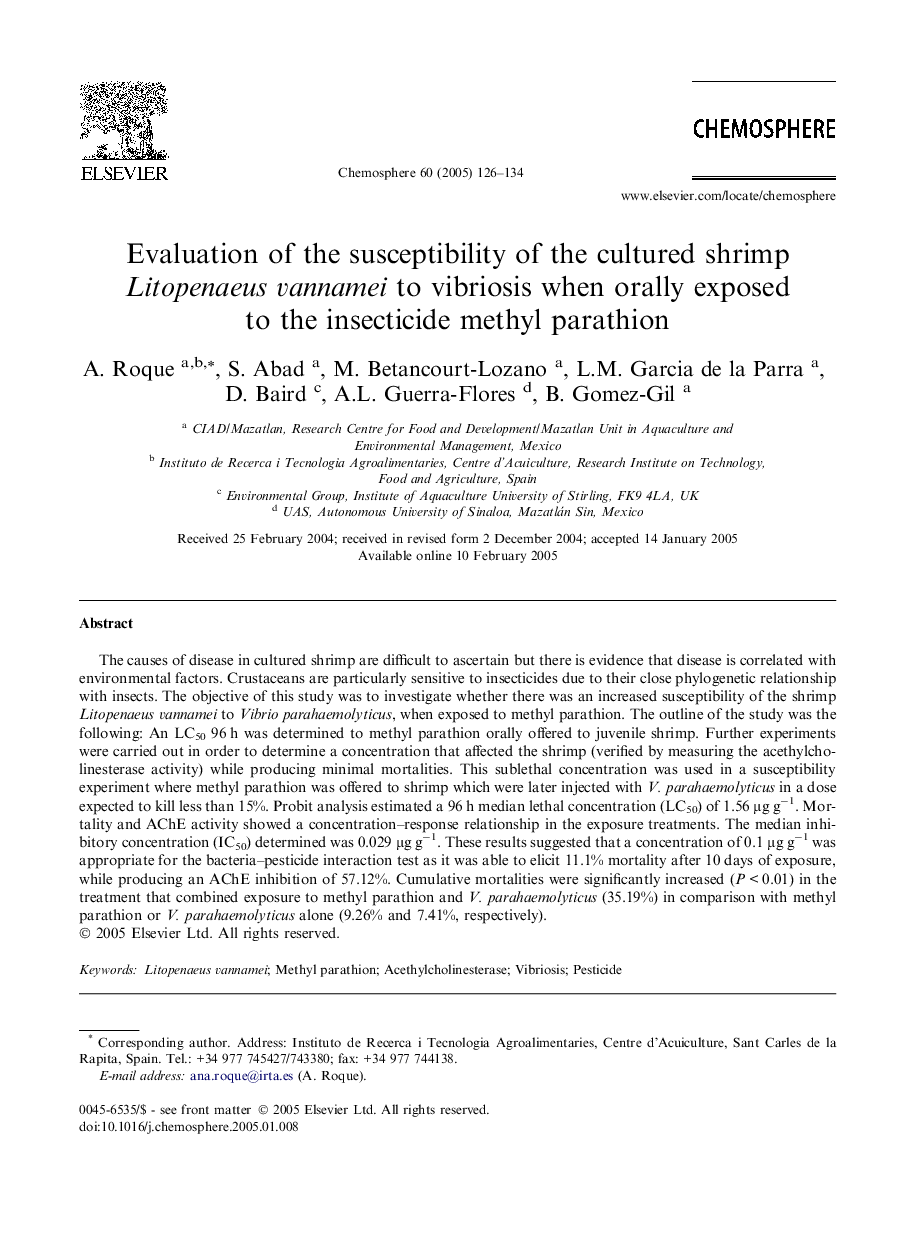| Article ID | Journal | Published Year | Pages | File Type |
|---|---|---|---|---|
| 9451610 | Chemosphere | 2005 | 9 Pages |
Abstract
The causes of disease in cultured shrimp are difficult to ascertain but there is evidence that disease is correlated with environmental factors. Crustaceans are particularly sensitive to insecticides due to their close phylogenetic relationship with insects. The objective of this study was to investigate whether there was an increased susceptibility of the shrimp Litopenaeus vannamei to Vibrio parahaemolyticus, when exposed to methyl parathion. The outline of the study was the following: An LC50 96 h was determined to methyl parathion orally offered to juvenile shrimp. Further experiments were carried out in order to determine a concentration that affected the shrimp (verified by measuring the acethylcholinesterase activity) while producing minimal mortalities. This sublethal concentration was used in a susceptibility experiment where methyl parathion was offered to shrimp which were later injected with V. parahaemolyticus in a dose expected to kill less than 15%. Probit analysis estimated a 96 h median lethal concentration (LC50) of 1.56 μg gâ1. Mortality and AChE activity showed a concentration-response relationship in the exposure treatments. The median inhibitory concentration (IC50) determined was 0.029 μg gâ1. These results suggested that a concentration of 0.1 μg gâ1 was appropriate for the bacteria-pesticide interaction test as it was able to elicit 11.1% mortality after 10 days of exposure, while producing an AChE inhibition of 57.12%. Cumulative mortalities were significantly increased (P < 0.01) in the treatment that combined exposure to methyl parathion and V. parahaemolyticus (35.19%) in comparison with methyl parathion or V. parahaemolyticus alone (9.26% and 7.41%, respectively).
Related Topics
Life Sciences
Environmental Science
Environmental Chemistry
Authors
A. Roque, S. Abad, M. Betancourt-Lozano, L.M. Garcia de la Parra, D. Baird, A.L. Guerra-Flores, B. Gomez-Gil,
